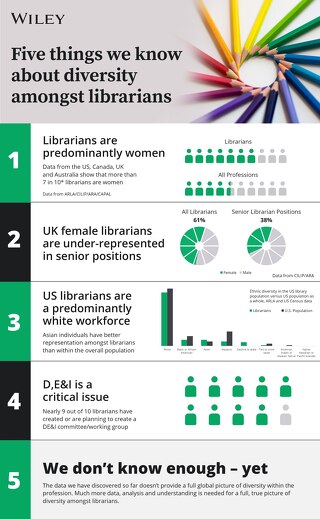how-technology-is-changing-the-future-of-libraries
April 11, 2018
Continuing from our previous blog post ‘What Will Libraries of the Future Look Like?’ we look in more depth at the changes you may see in your academic library.
Technology continues to evolve, and as it does it is becoming more and more integrated with society. Smart appliances and voice-controlled assistants are just two examples of how technology is evolving to make people’s lives easier. As technology changes the way we manage our lives, will it also affect the way libraries are managed?
Spurring innovation in the library
One of the major changes we expect to see in academic libraries is the use of new innovating technologies. The NMC Horizon Report Summary 2017 Library Edition suggests that in the very near future we will be seeing “libraries adapting to accommodate new applications of technology for learning, research, and information”. This is certainly not something new for academic libraries - they have had to be adaptive and flexible with new innovations in learning and research for some time now – but the report specifically references new applications of technology.
Adopting these new applications will allow institutions to “unite across international borders and work towards common goals”. This means we could be seeing further collaboration across the globe, enabling libraries in providing improved access to scholarly material and resources. These innovations could also “help libraries to more effectively preserve and mine their collections online”, thereby improving and redefining access for researchers.
This growing focus on the accessibility of digital resources will undoubtedly impact the role of library professionals. Librarians will be challenged to “learn new skills to be able to implement the new technologies for learning, research and information for their patrons”. This could lead to an increased focus on learning and development within libraries, a shift in what is taught in Library & Information Science courses or perhaps simply an expectation of librarians to extend their professional development.
Innovations will also lead to advancements in digital data management that will result in more accurate subject search results and citations while enabling libraries to more effectively curate and display relevant resources.
These new innovations will significantly improve the way patrons discover content, making it more accessible and relevant to them.
Re-thinking library spaces
The Horizon Report also identifies a shift in how students now use their libraries.
It explains that “students are relying less on libraries as the sole source for accessing information and more for finding a place to be productive”. Students now expect to be able to learn and work everywhere, with continuous access to learning materials and one another for collaborative learning. Their changing expectations, likely due to the always accessible Internet, places more demand on the library. Students seek out immediate and constant access to materials and libraries are having to explore new ways of accommodating this.
This demand for collaborative learning will also challenge institutional leaders to reflect on how the design of library spaces can better facilitate the face-to-face interactions that take place there. As a result, we are beginning to see the architecture of libraries change significantly. As we move forward, we may begin to see libraries implement new and innovative technology that allows room for active learning spaces, media productions, virtual meeting spaces and other areas conducive to collaborative and hands-on work. For some institutions, this may mean a complete overhaul of the library space, while others may explore less costly solutions that work with their existing space.
What is clear, with technology innovations and the evolution of library spaces, is that if we see these changes in academic libraries they will change the way libraries are used forever. Libraries are adapting to fit with a world that is increasingly digital and although we can explore trends, as with the Horizon report, there is no guarantee as to how this will evolve. In 10, 20 or even 30 years from now we could see libraries with completely paperless reading areas, touchscreen information portals and robotic assistants as guides. The real innovations remain to be seen.
Image Source: Pexels.com /George Becker









